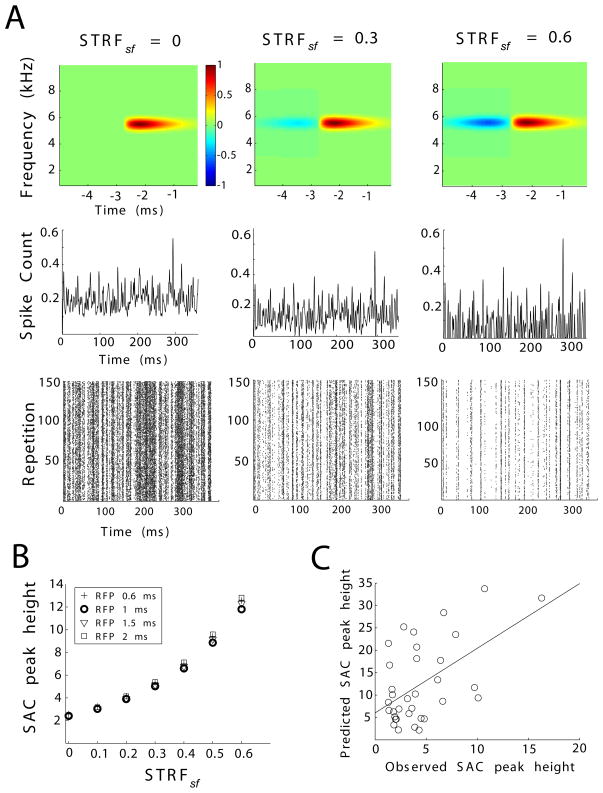Figure 6.
Modeling the effects of STRF suppressive field on response reliability. (A) Representative STRFs (top), PSTHs (middle) and corresponding rasters (bottom) at suppressive field magnitudes (STRFsf) equal to, from left to right, 0, 0.3, and 0.6. PSTHs are shown as normalized predicted spike count. Quantification reveals that pre-excitatory suppressive fields enhance response reliability (SAC peak height, B, in units of normalized number of coincidences). Different refractory periods (RFP) were tested (indicated in B). Datapoints for RFP = 1 ms are enhanced for clarity. A refractory period of 1 ms most closely approximates the estimated refractory periods across NA and NM. (C) The SAC peak height predicted by the model is correlated with the in vivo observed SAC peak height (R = 0.54, p = 0.001).

